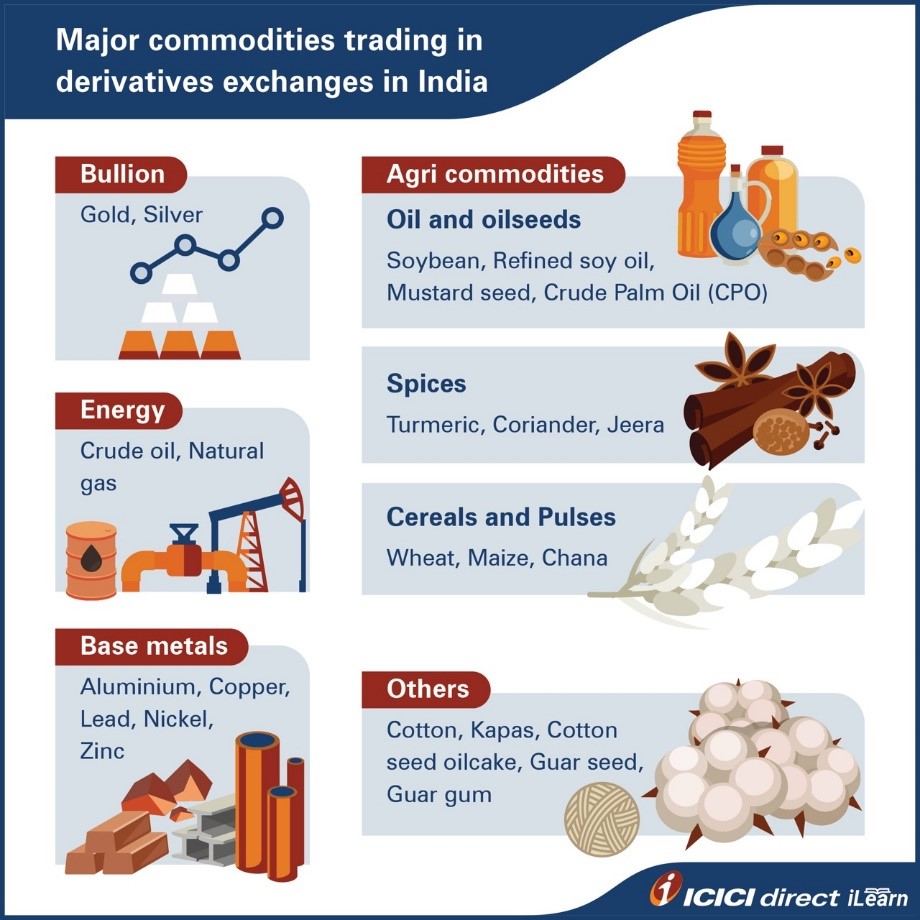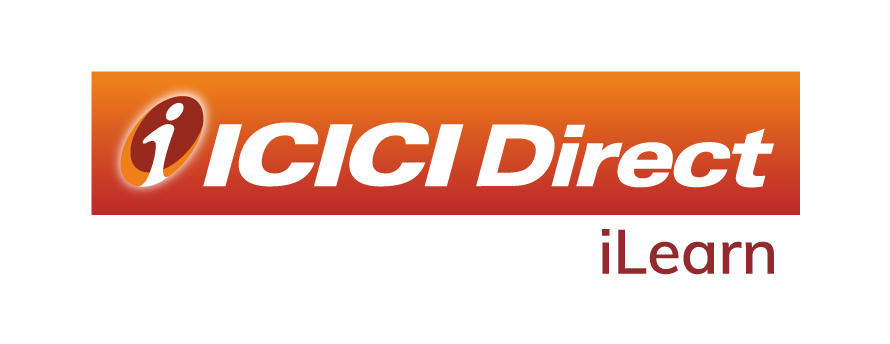Learning Modules Hide
Hide
- Chapter 1: Introduction to the Commodities Market
- Chapter 2: Understand Commodity Market Ecosystem in Detail
- Chapter 3: Understand the Working of Commodity Derivatives
- Chapter 4: Understand the Commodity Indices in Detail
- Chapter 5: Free Commodity Trading Course on Clearing and Settlement Process
- Chapter 6: Learn Risk Management for Commodity Derivatives
- Chapter 7: Understand Gold and Silver Bullion in Detail – Part 1
- Chapter 8: Bullions (Gold and Silver) – Part 2
- Chapter 9: Understand Crude Oil and Natural Gas in Detail – Part 1
- Chapter 10: Understand Crude Oil and Natural Gas in Detail – Part 2
- Chapter 11: Introduction to Base Metals
- Chapter 12: Understand Base Metals Derivatives Trading in India
- Chapter 13: Introduction to Agricultural Commodities
- Chapter 14: Understand the Uses of Commodity Derivatives
- Chapter 15: Learn Non-directional Trading Strategies in Commodities
- Chapter 16: Understand Legal and Regulatory Environment of Commodity Derivatives
Chapter 1: Introduction to the Commodities Market
Assume that you are a stock market trader and have been trading in stock Futures and Options regularly. In the recent past, the commodity market has been showing tremendous growth in terms of volume with prices of many commodities hitting either all-time highs or multi-year highs, thereby creating enthusiasm among traders. Therefore, you too, decide to start trading in commodities. But before starting to invest in commodities, it is of utmost importance to learn the basics.
There are a variety of investment options to help you invest your money and earn the best possible returns with the least amount of risk. Asset classes are broad categories that include but are not limited to, cash and cash equivalents, bonds, derivatives, equities, real estate, gold, commodities, mutual funds and alternative investments.
Here, you will understand more about commodity trading.
Commodity trading has progressed through the centuries from a barter system to spot markets to derivatives markets. Goods were transferred between two parties with complementary and opposing needs in a barter system. With the introduction of money as a means of exchange, commodity trade underwent a paradigm shift, with the worth of commodities being stated in monetary terms and trading being primarily undertaken through the medium of currency.
History of commodity trading
You may be under the impression that commodity trading started in recent years. That is not the case. Commodity Futures trading began in Japan, with the Osaka Rice Exchange establishing the first known regulated Futures market in 1730. In 1848 and 1877, the Chicago Board of Trade (CBOT) in the United States and the London Metal Exchange (LME) in the United Kingdom, respectively, commenced operations. In the following decades, many more exchanges were established in nations around the world, including Argentina, China, Egypt, Russia, Hungary, Turkey, and India. Commodity exchanges began to spring up all over the world after the 1990s, thanks to market deregulation and phenomenal expansion in information technology.
|
Did you know? CME Group is the largest commodity exchange in the world comprising CME, COMEX, NYMEX and CBOT. |
The Bombay Cotton Trade Association Limited pioneered structured commodities derivatives trading in India in 1875 with cotton, followed by Gujarati Vyapari Mandali with castor seeds, groundnuts, and cotton trade. Speculation, stockpiling, wars, and natural disasters have all resulted in temporary restrictions on the trading of specific commodities. Structured, regulated national-level commodity exchanges were formed with the introduction of MCX and NCDEX in 2003.
Spot v/s Derivatives market
Within commodities, there are three types of markets—Spot, Forward and Futures and Options. In the spot market, the exchange of goods happens between buyers and sellers instantly. However, this exchange of goods in the spot market was not a requirement for a couple of participants because they were keener on locking prices for future exchange of goods. Hence, these buyers and sellers started entering into an agreement to exchange goods at a future date for a price decided on the agreement date. This is called a Forwards Contract.
For example, a jeweller wants to purchase 1 kg gold after two months, but is uncertain about the price of the metal after two months. If the price of gold rises, then the jeweller will end up buying gold at a higher price. In order to protect himself from the price risk, he enters into an agreement with a gold refiner to purchase 1 kg of gold after two months at a price fixed on the agreement date.
The terms of agreement in this Forward Contract are mutually agreed upon between the refiner (seller) and the jeweller (buyer). There is always a counterparty default risk when the price is not favourable to either. If the price of gold rises above the contracted price, the seller (refiner) may default to honour the agreement and vice versa. Since these agreements are entered on mutual consent, there is no guarantee of the agreement being honoured if the price is not favourable to the contracted parties.
To overcome this default risk, Forward Contracts are modified into Futures Contracts wherein the commodity exchange designs the terms of trade. These exchanges also assure the exchange of goods upon the expiry of the contract.
Distinction between Spot market and Futures market
|
Particulars |
Spot |
Futures |
|
Delivery |
Immediate |
On expiry only (for stocks and a few commodity contracts), otherwise cash settled |
|
Investment |
Full value |
Margin |
|
Risk |
Less |
High |
|
Return potential |
Less |
High |
|
Trading through |
Physical market |
Exchange platform |
|
Terms of trade |
Varying |
Standardised |
Comparison between Stocks and Commodities
|
Stocks |
Commodities |
|
Price movements are based on the expectation of future performance |
Price movements are purely based on demand/supply and seasonality |
|
Price changes are due to corporate actions like dividend announcements, bonus shares/stock splits, etc. |
Price changes are due to policy changes or change in tariffs/duties etc. |
|
Predictability of future performance is reasonably high due to availability of performance history and quality of management performance |
Predictability of future prices are not under anyone’s control because factors such as failure of monsoon or formation of cyclones/typhoons etc. that affect prices cannot be controlled |
Commodity derivatives - Futures and Options
Commodity Futures are financial contracts which enable you to buy or sell an underlying commodity on or before a future date at an agreed upon price and to transfer the risk to the other party as well as a hedge against adverse price movements. To enter into a Futures Contract, you are required to deposit a small portion of the amount as a margin with the exchange through registered broker.
Commodity Options give the holder the right but not the obligation to buy or sell commodities at a specified price and within specified time periods. After taking over the regulation of the commodity market from Forward Markets Commission (FMC), the Securities and Exchange Board of India (SEBI) has allowed Options trading in commodity Futures as well as on goods. However, the Options on goods are not liquid. As an Options buyer, you are paying a premium and as an Options seller, you are paying a margin.
You will gain a detailed understanding about commodity Futures and Options in upcoming chapters. To get a detailed understanding of Futures and Options in general, you can refer to our modules on Futures and Options.
Comparison between Equity and Commodity derivatives
|
Parameter |
Equity derivatives |
Commodity derivatives |
|
Price movement |
Primarily based on |
Primarily based on |
|
Basis |
For derivatives – Equity cash/Spot market |
Physical market |
|
Trade timings |
9.15 AM - 3.30 PM |
9.00 AM - 11.30/11.55 PM |
|
Settlement |
Delivery on expiry for stock derivatives otherwise settled in cash |
Three methods of settlement: |
|
Nature of the product |
Equity refers to an investment that is invested into a firm or a listed entity to acquire ownership and share profits |
Commodity refers to a basic and undifferentiated product on which traders can invest or take positions |
Major Commodities Traded in Derivatives Exchanges in India
In India, commodity trading had been in existence in the late 19th century. However, trading was suspended after independence due to various reasons. Organised, regulated national level commodity exchanges subsequently came into existence in 2003 with the incorporation of Multi Commodity Exchange of India (MCX) and National Commodity & Derivatives Exchange Limited (NCDEX). After the unification of financial markets, National Stock Exchange (NSE) and Bombay Stock Exchange (BSE) have also started offering commodity derivatives on their respective platforms.

For the complete list of commodities available for trading on MCX, please click here.
Summary
- Commodities are part of an asset class along with equities, currencies and bonds.
- National level online commodity trading started in India in 2003.
- Commodities available for trading are categorised into Bullion, Energy, Base Metals and Agri.
- Major commodity exchanges in India are Multi Commodity Exchange of India, National Commodity & Derivatives Exchange Limited (NCDEX), Indian Commodity Exchange (ICEX).
- National Stock Exchange (NSE) and Bombay Stock Exchange (BSE) also offer commodity trading.
- Securities and Exchange Board of India (SEBI) is the regulator of commodity derivatives market w.e.f. 28 September 2015 after the merger of erstwhile regulator Forward Markets Commission (FMC) into it.
In the next chapter, you will be learning about the commodity market ecosystem in terms of market participants, and their roles and responsibilities in the smooth functioning of the commodity derivatives market.
 Top Mutual Funds
Top Mutual Funds






COMMENT (0)